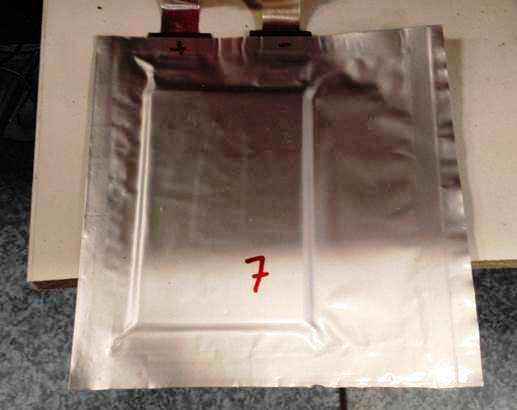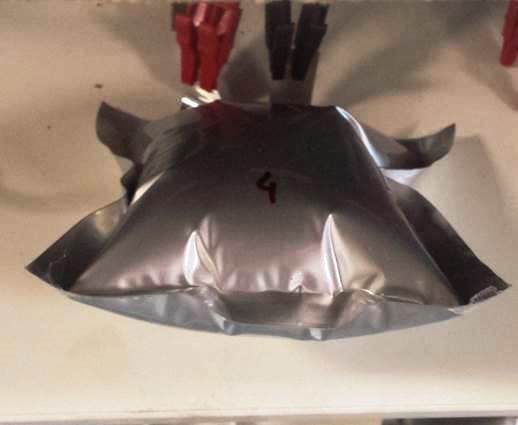
In the framework of a joint research study with Argonne National Laboratory (USA) and Mercedes Benz R&D North America, CIDETEC Energy Storage researchers have demonstrated an specialty additive that makes lithium ion batteries significantly safer against overcharge.
This additive, a di-tert-butil bis-metoxi-etoxi benzene derivative –or DBBB-, developed and patented by Prof. Zhang from Argonne National Lab, had been demonstrated previously in other rigid case formats such as in cylindrical cells, but not yet in the format that is probably receiving more attention by key markets such as automotive due to its lightness and compactness, such as in the flexible cased pouch type cells.
In particular, the DBBB additive has been evaluated in lithium ion prototype pouch cells manufactured and tested by the CIDETEC Energy Storage team, based in a graphite/LFP chemistry.
LFP –or lithium ferro phosfate- batteries show an outstanding intrinsic safety against mechanical and electrical abuse without self-ignition, as opposed to other chemistries. Nevertheless, in the context of an overcharge event, the excess charge supplied to the battery, and not absorbed electrochemically at the electrodes, will inexorably provoke electrolyte decomposition with gas formation and irreversible damage of the battery cell.
Nowadays this kind of situation is avoided thanks to sophisticated electronic control systems at the battery management system level, at the expense of an added extra cost and complexity.
In the present study, that has recently been published in the highly recognised ACS Applied Materials & Interfaces journal, the pouch battery cells were submitted to a overcharge process of 200% -in other words, the batteries were supplied with twice as much capacity than they can nominally absorb-. In this situation, while DBBB additive containing cells where able to run for more than 700 cycles before showing sign of degradation, blank, additive free cells running in parallel were severely damaged after the first cycle only, with complete electrolyte decomposition, gas generation and extensive swelling.
These results, not only supply a visual proof of the benefits of the DBBB additive, but also open a promising strategy to improve the intrinsic resistance against overcharge events, at the same time allowing simplification of the electronic control systems, and ultimately improving the cost and safety performance of the technology.
 Cell without additive, showing complete swelling after only the first 200% overcharge experiment.
Cell without additive, showing complete swelling after only the first 200% overcharge experiment. Cell with DBBB additive after 700 overcharge cycles at 200% nominal capacity, with its mechanical integrity and electrical performance virtually unaffected.
Cell with DBBB additive after 700 overcharge cycles at 200% nominal capacity, with its mechanical integrity and electrical performance virtually unaffected.